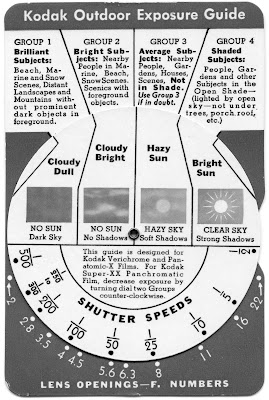Unless you have been in a cabin in the woods without internet access, you have no doubt seen all of the hoopla about simple-use and single-use cameras. Several podcasts (All Through a Lens and the FPP) have had dips into the world of disposable cameras.
 |
| Kodak's latest |
 |
| Konica B&W from early 2000s |
Yes, I am being satirical here, but the truth is that how much the equipment costs does not equal great photographs or meaningful images. You can have a 20 x 30 inch colorful photograph that was shot with the latest and greatest technology, and it can be soulless wall art. Or not. Great images depend on the person holding the camera making that exposure. It doesn’t matter if the camera is a one-time use Kodak with Tri-X film, a Leica MP, a Rolleiflex, a Canon A-1, Olympus XA, Nikon F4, a battered Pentax Spotmatic that you bought for $10, or a $2500 mirrorless outfit. The photo is made between the ears.
Why is it that young people are wanting to shoot film? It definitely isn’t perfect. Things don’t always come out the way that you thought they would. It takes chemicals to process the film, and it’s expensive to send rolls to a lab. Yet, they persist, because film has captured their imagination. It’s okay to have serendipity, to have a mistake turn into a successful image. Using a camera that is always ready because it has no batteries to charge, no start-up delay, and requires only that you, the person using it, has some creative impulse to satisfy. Even a lowly one-time use camera can be used, within its limitations, to take interesting and meaningful images.
 |
| From an Agfa LeBox dispo camera. |
There is something about using a Nikon F with just its plain prism that I am sure the digital folks just won’t get. That is, the ability to always choose exactly what I want to shoot at. There is no mini-computer telling me what the histogram should be, asking what digital effect would I like, whether or not the person is smiling in face detection, etc. Photography should not have to be about those things. What do you feel? What do you see? How does the scene before you affect you? How will you commit it to a piece of acetate with a coating of silver salts and dyes?
As we approach the end of 2021, and I look back on over two decades of committing myself to becoming a photographer, I see how I have changed in my approach and my expectations, and choice of subjects. In the beginning, I wanted to be able to take really good macro shots of insects, because that was the realm within which I worked. Along the way, I learned a lot by reading, and shooting hundreds of transparencies, because that’s what the nature pros did. Slide film. Just when I got pretty good at it, digital SLRs started to appear, and they became a tool that I used in my work, and made my museum work all the better because of the immediacy and how the images are used.
 |
| Magicicada septendecim, May, 2004 |
But that work world was different from the creative world that I embraced with film cameras. In that world, lay the myriad paths one could take, depending on types of film, type of camera, format, type of lens, or not lens (pinhole), genre, type of darkroom process, etc. In other words, film photography is a rich environment that never stops being capable of teaching us things. You don’t need to spend much to get into the club, and in the film world, everyone has a seat at the table. From one-time use cameras to wet-plate, from pinhole to Leitz Summicrons, from Kodak Gold 100 to Ilford Ortho 80. In short, the film world offers creative possibilities that will often lead one to paths that they never knew existed.
 |
| Bill Schwab, 2008 and his wet plates |
So, this season, buy a kid a Kodak, Lomo, or Harman simple-use camera and see what happens. Be ready to have an old Pentax or Canon or Nikon to loan or give away once the thrill kicks in.


3 comments:
I fully agree.
Best wishes for the end of the year and the beginning of the new one!
Michele
Thank you, Michele! Best wishes for 2022, as well.
Mark
I love my digital Nikon. I haven't touched in months. Used film cameras are cheap but starting to escalate in price. I grabbed a used Hasselblad and lenses for half of what I paid for my digital. 4x5 for 1/4 of the digital. Yes, it can be frustrating. Yes a lot more time is involved in the darkroom. But, it's so much "better ". Love this post of yours. Make the plunge. Open doors. Create.
Post a Comment